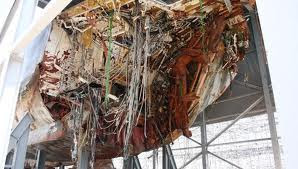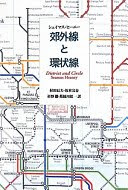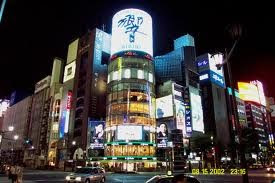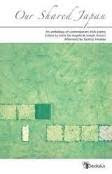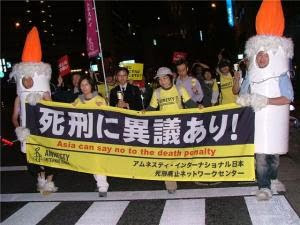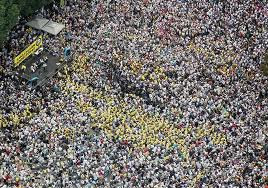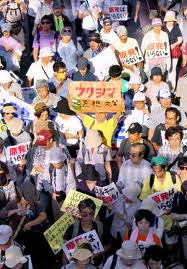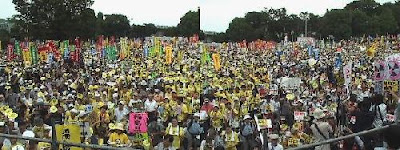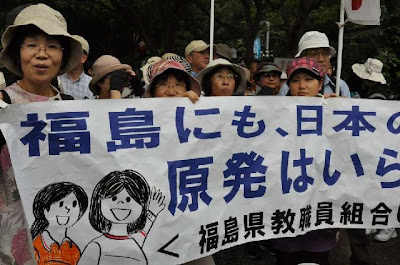
I was last in Seoul during the insufferable summer of 2008, attending All Together’s Marxism conference as the Candlelight Movement shook Korean society.

Seoul’s a gloriously chaotic city, beautiful in its shambolic liveliness and, after months in the buttoned-down decorum of Tokyo, its energy and sense of fun were infectious. I have family who are Zainichi Korean and, over the years, getting closer to them has led me to get more and more fascinated and involved with Korean culture: Seoul was a sensory overload. Fundamentalist Christians shuffle up to you on the underground and whisper “embrace Jesus”; before you’ve had a chance to decide whether you will or not they’ve wandered off. Station platforms are crowded with women selling piles of everything from deliciously enticing pickles to perfectly priced socks. In summer months after business hours shopkeepers set up gas cookers outside their stores, and relax by barbequing snacks and drinking a few shots of shochu before heading home. For non-alcoholic treats you can stop at most street corners and buy peaches blended with ice and sugar. Koreans, too, for a puritanical and gauchely awkward New Zealander like me, seem emotionally liberated: after dark the pubs were full of salary men singing together and wandering around arm-in-arm. The summer felt celebratory.

That demotic, free-spirited city life wasn’t everything, though. Travelling by tube, I was struck by the straight backs of all the men, a reminder of the bullying and violence meted out as part of compulsory military training. Soldiers in uniform are a normal, and visible, part of city life. The city was a site of struggle: wherever we went we’d see the banners and placards of the Candlelight Girl, the movement’s symbol, and often stopped to spend time with little clusters of protestors camping out.
More sinister signs were to come. On the morning of Liberation Day – the day of light, celebrating when the Japanese were defeated – I left our guest house to buy some breakfast, and saw that the streets were crowded with riot police. The state had decided to crush the movement.

South Korea is, in the Western press most of the time, held up as an example of democracy. What we saw could, at the very best, be described as illiberal democracy. Our comrades in All Together base their analysis on the ‘state capitalist’ theories of Tony Cliff, and offer no support for the regime in Pyongyang. That hasn’t stopped many in their ranks being jailed for thought crimes, charged and imprisoned for translating works like Alex Callinicos’ Revolutionary Ideas of Karl Marx. All Together played a leading, and positive, role in supporting and shaping the Candlelight Movement and, for that reason, their conference was targeted. The university in which it was hosted had, at the very last moment, cut off the power supplies – for three days in mid-July heat we struggled through humidity with hastily-assembled generators keeping minimal heating and air conditioning at work. All Together members, who had sought shelter in a Buddhist temple following brutal police repression, were wanted figures, and, to get to the conference you had to walk past a phalanx of riot police, decked out in full battle regalia. The Saturday of the conference there was a major demonstration scheduled. We’d planned to attend but, early in the evening, conference organisers took us aside; they didn’t want us to go, C explained, because they couldn’t protect us or expect us to take care of ourselves in strange streets, and expected the violence to be sudden and intense. That night we spent, somewhat guiltily, in a local restaurant, checking our phones between courses to see how the cat-and-mouse chases of protestors and police progressed. The next morning we saw many delegates with stitches, and some still bleeding. O, our interpreter, had bruises all the way up his arm.

I’m not a physically confident person, and these details intimidated me. What sticks in my memory, though, is the joyousness of the event, the bubbling energy of the movement pointing in a different direction for Korea’s future. There were children from the crèche running about between sessions; the walls were decorated with union banners and campaign posters; the youth and energy of the crowd gave a clear sense of the forces welling up in the protest and social movements. And there was plenty of laughter. Most of the jokes got lost in translation, but some made their way through. Guest speaker Jonathan Neale, a movement veteran, a bear-like and warmly expansive American socialist, gave a talk on alienation: “I carry mine around with me as a reminder!” he explained, slapping against his belly. Jonathan’s been to many international conferences, and he can explain complex ideas in short, simple sentences – the meeting came alive.

All Together have dedicated a great deal of intellectual and political energy to analysing the origins and dynamics of capitalism in Korea, north and south. They’ve got a clear line for how to get the peninsula nuclear free: let’s start by ending the US occupation. They put their trust in workers on both sides of the border, and have never had any illusions in the regime beyond the 38th. A younger generation, impatient with the Cold War rhetoric of their elders, are less caught up in the demonology of the GNP, and the social movements in the South have freed themselves from poisonous legacies of earlier eras. At the conference, though, I was struck by how many people at question time still wanted to explore the situation in the North, and from the view of the North. After a solid diet of Western liberal accounts of Korea, it’s easy to forget that this is a nation dismembered and still at war, and one with a proud history of resistance to foreign occupation. What may seem bizarre and unpredictable from Washington or Wellington still feels dangerous from Seoul, but motives come into a much clearer view.

I left Seoul feeling happy, and having made many new friends and contacts. The Candlelight Movement looked like it would develop.
A year later, I found out my friend O had been jailed, arrested for distributing leaflets in a public place. There’s a chill over those summer memories now.
*
I’ve never been to Pyongyang, although friends have. A contingent from KEY – the organisation of united Korean youth in Japan – went a few years ago, searching out family members they’d never had the chance to meet until then. Those Zainichi in Japan who have refused to rescind their “North Korean” papers have made a very bold choice, and one that’s hard for many of us fully to understand. They’ve taken upon themselves many inconveniences – and have ruled out all sorts of travel, educational and employment opportunities – for the sake of a principle, and a principle around which they’ve few chances to organise. The statement in refusing Japanese or South Korean citizenship involves insisting on certain historical realities, reminding the world about colonialism, drawing attention to the justice they and their ancestors have been denied. It’s an extraordinary gesture, and one I’m glad I’ve never been forced to see if I’d have the courage to emulate.

My friend K went to Pyongyang, then, to seek out family, and to see the land she’s attached to without having been born there or even, to that point, having visited. What she saw won’t surprise, but should still upset; US-driven sanctions have led to widespread hunger. The regime’s autocratic rule prevented any real communication. The constant mobilisation for war (by no means wholly unjustified) lent the city a sinister, fearful air. It was a lonely, and difficult, trip.
Most of the “North Koreans” in Japan, though, aren’t from the north at all – their relatives are, in the main, from southern regions, and, after the war, took on northern identities for reasons of nationalism and political solidarity. In a country as regionally specific as Korea, the north really is another country.
The ruling classes of both Koreas have played shameful and grubby roles in manipulating the lives of Zainichi Koreans over these last decades. The DPRK, with the connivance of Japan’s rulers and of the International Red Cross, set up mass emigration programmes for Zainichi that resulted in many semi-forced removals from Japan. Who knows how many of those people were subsequently jailed or killed in the north. It was from Tokyo that agents of the Park dictatorship kidnapped Kim Dae-Jung in 1973, taking him to what came very close to death. Thousands of people in Korea, China and Japan are separated from family members and lovers due to the borders and ambitions of imperialism.
The Korean Peninsula is the site of an ongoing, and massive, human tragedy.
*
I don’t shed any tears for Kim Jong-Il. Another ruler falls in the year of revolts. Like my friends in All Together, my hopes are for a Korea united from below, by mass democratic movements of workers in both countries.
I come close to shedding tears, though, at the coverage his death has received: tears of frustration and anger. The idiocy of the mainstream media and the commentary of the so-called experts and hawkish IR figures, all concerned with Kim’s idiosyncrasies and alleged habits, don’t surprise me. More dispiriting, though, has been the memes spreading through Facebook and Twitter from friends and people who should know better. You’ll know these – Kim looking at things, jokes about Dear Leaders, Kim in Team America singing “I’m so rornery”. (The hilarity! Asians confuse their l and their r!).
Anger or contempt for a dictator I welcome, but this ridicule is dangerous. The racism mobilising it all should be too obvious to deserve mention: we have here another figure of the Asian as buffoon, as a comical figure playing out their foolishness on a European world stage their ambitions are unable to match. That this hinders thought hardly needs argued; that it effaces History, again, is worth pondering. The politics of the peninsula are frequently strange, but they’re strange for a reason, and those reasons are to do with war, invasion, occupation, starvation, and the constant threat of further US intervention. Smug liberal gloating over Kim the clown, Kim the cartoon character, reinforces all the colonialist piety that makes Western readers and thinkers, even the most well meaning, ill equipped to handle the charge and challenge of Korean material.

What images we receive, and what narrativising impulse is brought to bear upon them, matters here too: this Kim Jong-Il isn’t the one we’re trained to view, although the details of clothing here suggest points in common with Japanese life both the DPRK leadership and the Japanese would be at pains to deny.
Kim’s death opens an interesting, and, perhaps, exciting time in Korean history. He was a leader who – on his own terms – was very successful. What comes next will matter for the region, and the world. Chinese and US powers will be closely involved.
Who knows what will happen following Kim’s death. I don’t pretend to have any particular expertise. A cursory reading of US foreign policy intellectuals’ work, though, shows us that strategies have been debated for some years now, and none of them are strategies for peace. The Korean War is a tragedy, not material for the one-liners of the well-adjusted news junky.
*
A more personal note to end with. Paul Gilroy, in his “Multiculture in Times of War” (PDF), argues that the true fruits of anti-racist activity present themselves in a certain metropolitan ‘conviviality’, when racial differences ‘appear ordinary and banal, even boring.’ When different languages and foods and ways of living coexist so often, and so frequently, that they don’t need remarked upon we’ve moved some way, Gilroy suggests, to a better society. Not the racist white myth of assimilation, but not the enforced separation of multiculturalism either. Conviviality suggests the freedom –and political space – to be in one’s own being amongst others, to have the realisation, as Raymond Williams put it many years ago, that ‘culture is ordinary’. If everyone’s parents have ‘accents’, to take the example of primary schools near me, none of them stand out so much, and, equally, all of them are valued.

I’d like to imagine, then, a convivial world where a child growing up with Zainichi heritage can feel comfortable wherever they end up, be that Wellington, Tokyo or Seoul, and where the question of identity, so fraught and important for our struggles now, may seem to them boring, irrelevant, or overworked. The issue of belonging becomes particular acute when others try to deny you that right; left free to explore its implications alone, more complex relations may emerge.
That sort of world can’t be produced from the wilful misunderstanding and caricaturing that leaves so many so comfortable with racist depictions of Kim. It can’t be produced in a region still defined by permanent war, either, as the US mobilises Japanese and Korean nationalisms for reactionary ends of its own. It will take the reconstruction of a particular internationalist culture, one I’ve found, centrally, in the workers’ movement, the unions, and the banner of socialism. It needs, in other words, a conscious internationalism.
So, once more, it’s neither Pyongyang nor Seoul, but international socialism.
A Note
This post draws on others’ stories, and on situations that still present some real political risk. I’ve changed all the names of those involved; the letters I’ve used don’t correspond to real names.
I don’t mean to get into the Stevie Wonder habit here too often, and am sorry if those last paragraphs seem manipulative, or inappropriately personal. I don’t mean them to be, but the conjuncture of events makes it hard not to write about them together.
The young Kim photo is from the Hankyoreh website; I found it via @melnik0v's twitter feed.








